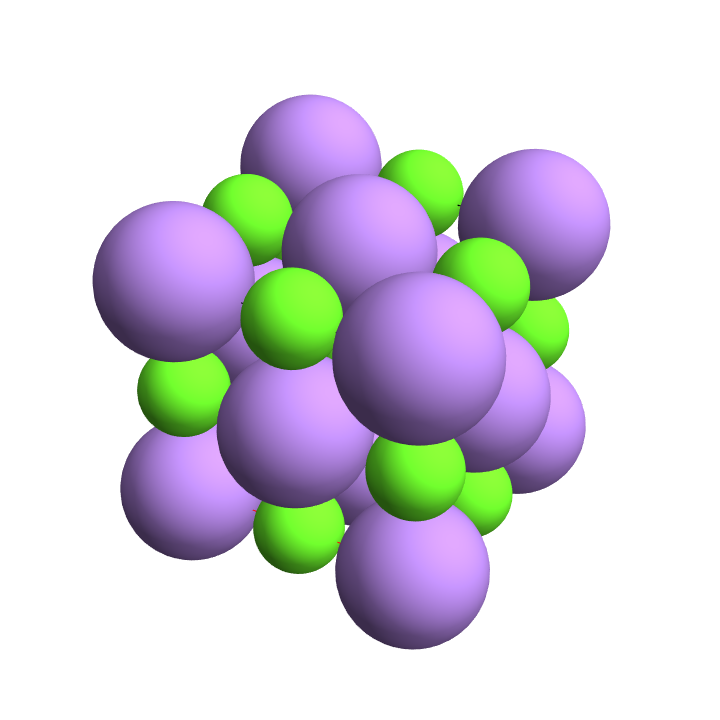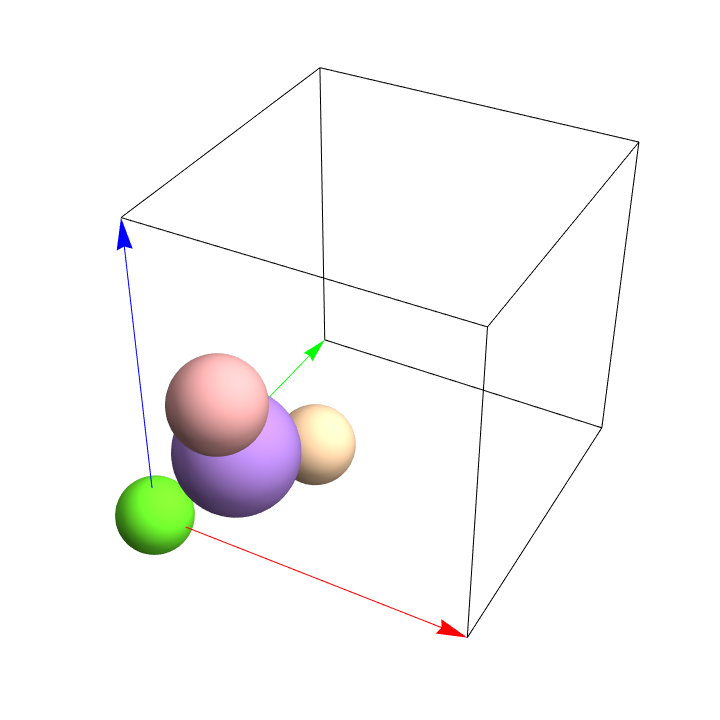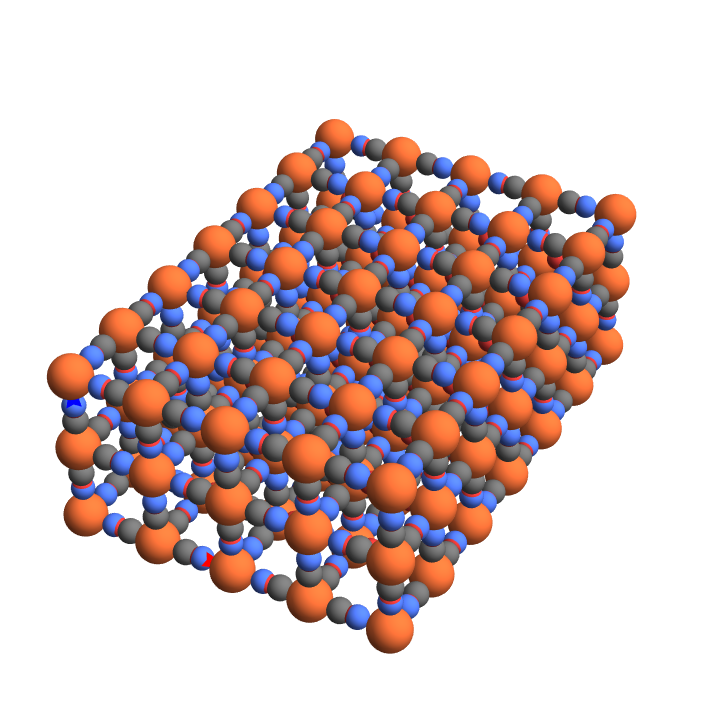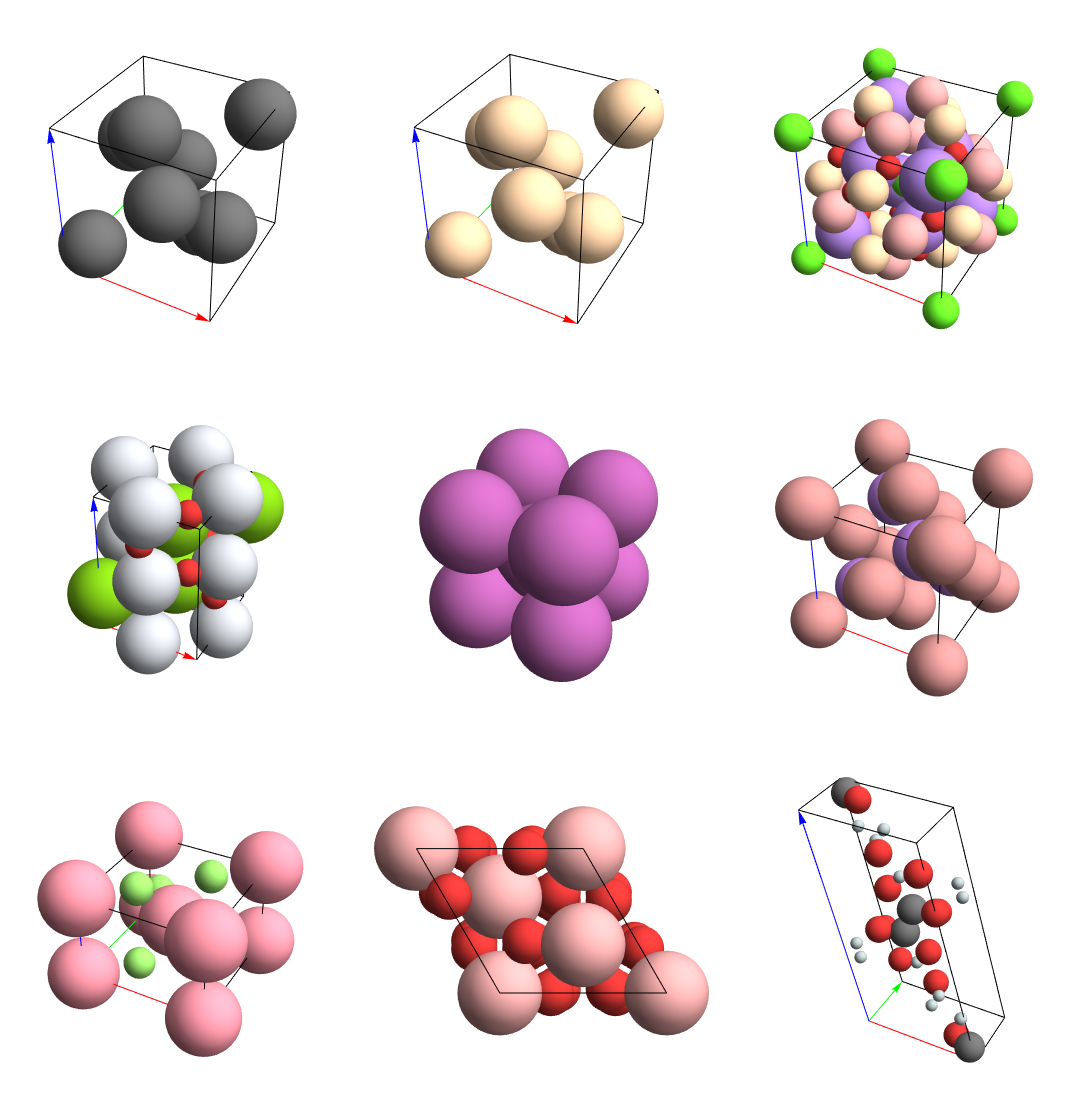MAXRD SYMBOL
CrystalPlot
CrystalPlot[crystal]
plots the atom structure of crystal.
Details and OptionsDetails and Options
- In additions to the options of Graphics3D, there are:
-
"AtomRadiusType" "CovalentRadius" which type of atomic radii to assume "AxisFunction" Line function that draws the lattice lines "OpacityMap" <||> set an opacity value for specific chemical elements "RGBStyle" True whether to colour the unit cell arrows "StructureSize" {0, 0, 0} expand crystal to a given size "UnitCellDisplay" "Box" display unit cell as "Box", "Axes" or "None" - When using the "StructureSize" option, an expanded crystal structure is stored in the temporary association MaXrd`Private`$TempCrystalData.
- If crystal is either trigonal or hexagonal and the user does not specify a value for the ViewPoint option, it is set to Above.
- The atom radii have been tabulated using the built-in
. Elements with missing values have been assigned to
 .
. - The option "OpacityMap" recognises, in addition to the chemical elements, the specific terms "Host" and "Guest" to adjust the opacities of all atoms associated with these components. If one of these components is listed in addition to an element contained in it, control of the individual element has precedence.
- The atom radii have been tabulated using the built-in ElementData function, see the snippet GenerateListOfRadii below. Possible settings for the "AtomRadiusType" include:
-
"AtomicRadius" calculated distance from nucleus of outermost electron "CovalentRadius" half-distance between nuclei in a bonded pair of atoms "VanDerWaalsRadius" hard sphere interatomic interaction range
Related LinksRelated Links
Bianca Eifert and Christian Heiliger's Crystallica package






